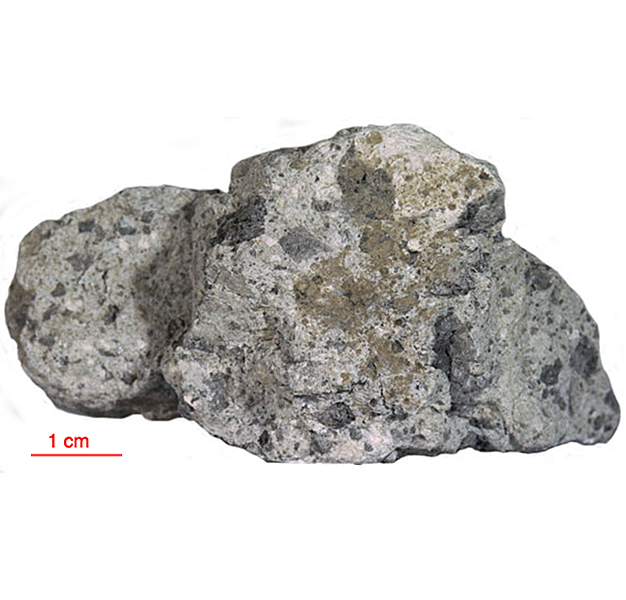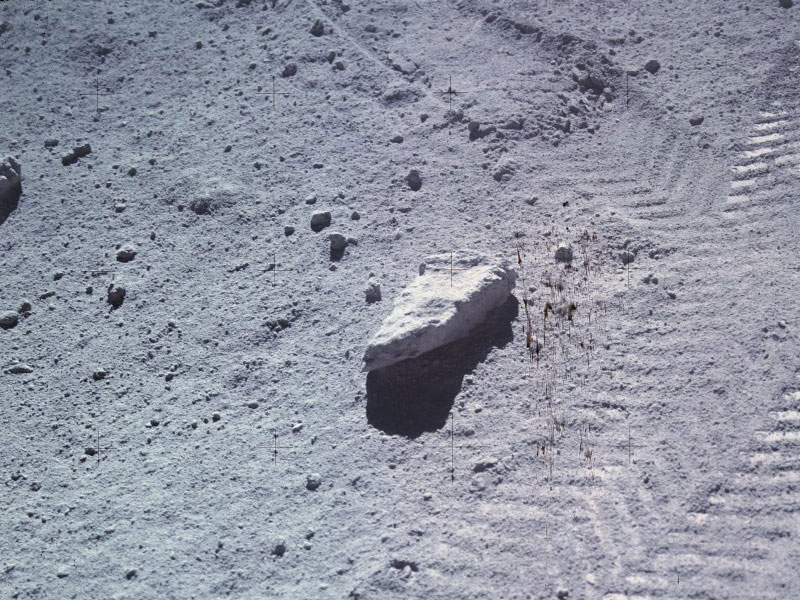
Fact sheet
Sample 67016 is a feldspathic fragmental breccia that was collected from the lip of North Ray Crater during the Apollo 16 mission. It is thought to be analogous to the terrestrial rock known as suevite - the name given to impact breccias found in meteorite impact craters on Earth.
In thin section, the rock is a porous breccia with dark-lithic clasts and lighter plagioclase fragments. The lithic clasts include feldspathic granulitic impactite, ferroan anorthosite, subophitic impact melt and a variety of other types. The porous light-coloured matrix surrounding the clasts consists mostly of plagioclase with minor pyroxene and olivine. Ilmenite is also present as polycrystalline and heavily deformed grains.
Further details of this and other Apollo samples are here: http://curator.jsc.nasa.gov/lunar/
The Apollo 16 landing site was in the hilly region around Descartes crater in the lunar highlands. The landing spot was chosen to allow the astronauts to gather geologically older lunar material (Descartes Formation and the Cayley Formation) than the samples obtained in the first four landings, which were in or near lunar maria.
The mission lasted 11.1 days, with a stay on the lunar surface of 71 hours. The crew were on the lunar surface for 20.2 hours during which they traversed approximately 27 kilometers and collected approximately 96 kilograms of samples.
Apollo 16 was launched on 16 April 1972.







